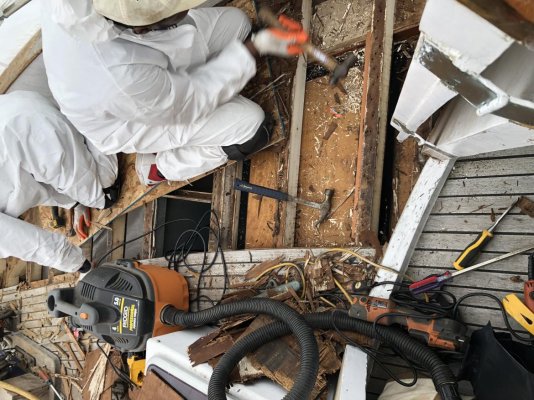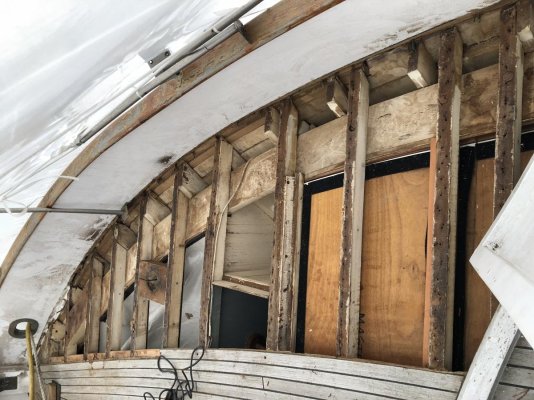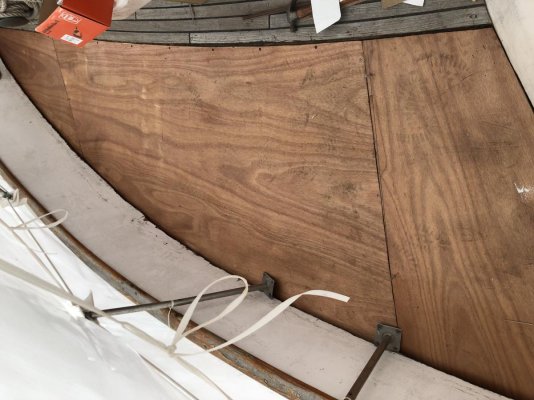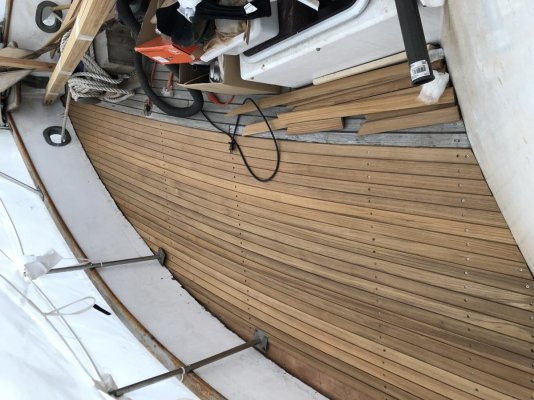Invest in a decent Moisture meter and become familiar with the relative scales. Even a Tramex Skipper ($500+) will pay for itself the first time in saved Survey expenses by ruling out boats before u sign an offer with sea trial & survey at your (further) expense.
Flatswing, I'm sure your advice is well-intentioned, however, proper use of a moisture meter isn't something you pick up in a few hours, it's a skill that's learned from experience and from others who know how to use it successfully. It truly takes hundreds of readings to become completely comfortable with what the meter is telling you, and even then you should still have some doubt.
When I ran a boat yard we did a great deal of core repair work, and we made extensive use of moisture meters. There's nothing like taking a series of readings on a deck or cabin top, and then cutting it open and seeing what you hoped the meter was telling you was right. While I'd definitely call them an invaluable tool, they are not fool-proof, for instance they will read a block of ice as dry (I've seen surveyors take readings on hulls in sub-freezing weather), and a metal (think backing plate or tank, or screen embedded for an SSB counterpoise)on the other side of the surface you are reading as wet.
In the work I do now I travel with two identical Tramex meters, which I use to confirm readings that don't necessarily seem right. I trust them 95% of the time, but there's always a little skepticism. In most cases they are confirming what I already believe to be true, I see brown water running out of an under deck screw hole, or a section of deck feels spongy, the meter confirms what I'm seeing or feeling.
I've seen moisture meters used incorrectly by amateurs an professionals alike, taking a whole series of readings with the meter set on the wring scale for instance, there are three settings on the Tramex, hardwood, surface moisture and GRP.
The relative scale on the Tramex is just that relative, you should use it on a known dry section of FRP first, like a non-cored hull topside section. That's the baseline. a 100 on the relative scale, by the way is equal to 1.5% moisture by weight, that's not even wet enough to feel, however, if the meter is pegged, that could mean imperceptibly damp or sopping wet mulch. I've seen solid FRP topsides read wet because they were painted with a coating that had a high metal content, that buyer almost walked away from that purchase because he was told the (solid) hull was wet.
All this is to say that moisture meters should be used by those who know how to use them and can be confident in their results.
There's a very good (and somewhat controversial) article on the subject of wet core in Professional Boat Builder magazine #96. Read the editorial on page 3 first, then the article begins on page 16. When it was first published it turned a lot of heads, as it called into question much of the then conventional wisdom on "wet" core. I don't necessarily agree with all the conclusions, however, it's worth the read
https://pbbackissues.advanced-pub.com/?issueID=96&pageID=18
And, don't get me wrong, I'm not suggesting wet core is nothing to worry about, I spent much of my career repairing or preventing it, wet core repairs paid for my kids' braces, and probably a new car or two. But there's wet and there's wet.
Once you've read the PBB article, you can read this article on core repairs and on preventing water penetration
https://stevedmarineconsulting.com/cored-composite-deck-hardware/ Here's the Reader's Digest version
https://www.proboat.com/2015/10/the-hard-facts-about-hardware-installations/
Finally, I'm with other forum members regarding conventionally fastened teak decks, each screw hole is a water entry point, it's almost impossible for water to
not get into a cored deck on a vessel with this construction technique, it's why modern vessels glue rather than screw their teak decks.




